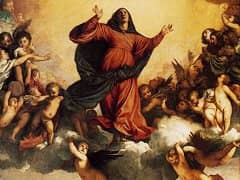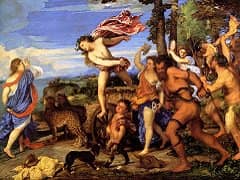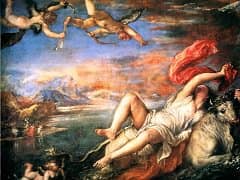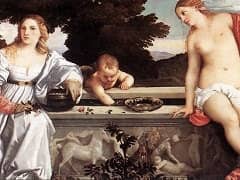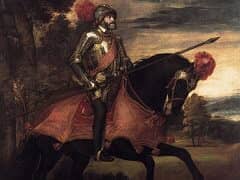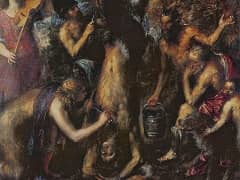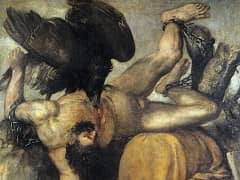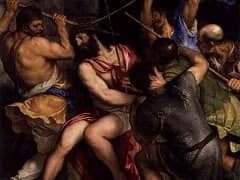Portrait of the Vendramin Family, 1543 by Titian
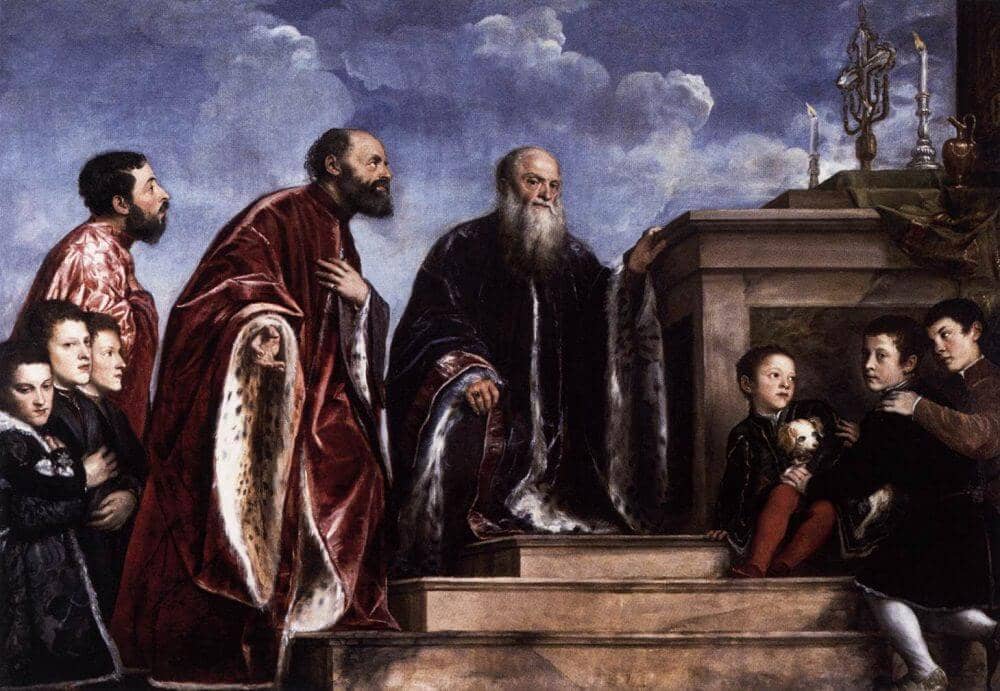
Returning to Venice from Rome in 1546 Titian created a remarkable group portrait of the male members of the Vendramin. Here he domesticizes official work such as Bellini's votive portrait of Doge Agostino Barbarigo as well as frescoes he had seen in the papal apartments in Rome. While the painting has the look of an impromptu gathering, it is rooted in prestigious models that betray political motives on the part of Titian and the Vendramin.
Titian adapted elements such as the steps, massive altar and flickering candles from Mass of Bolsena by Raphael as a suitably impressive setting for the Vendramin family's adoration of a reliquary of a fragment of the True Cross. Although the relic was owned by the Scuola Grande di San Giovanni Evangelista, the Vendramin family was closely associated with it: one of their ancestors had donated the relic to the Scuola, and an Andrea Vendramin, namesake of Titian's patron, was famous for having rescued it when it fell into a canal. Titian suggests the intimacy of the family's relation to the relic by placing the current head of family (also named Andrea) in the centre of the composition, with one hand on the altar as he looks out of the picture, inviting the viewer's participation. At the left two other family members, dressed in senatorial red, pay their eloquent devotion to the relic, the middle-aged man reaching out as if to share his adoration with others. Titian records and contrasts the emotions of his subjects; the sober obedience of the adolescents at left and the innocent play of the children at right serve to underscore the maturity and depth of the adults' piety, as civic, as well as personal virtue.
Titian is supposed to have said a painter only needed three colours: white, black and red. Looking at this painting, one may well believe it.

